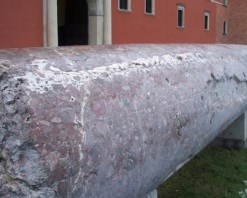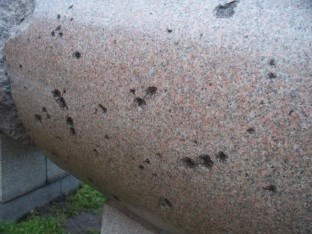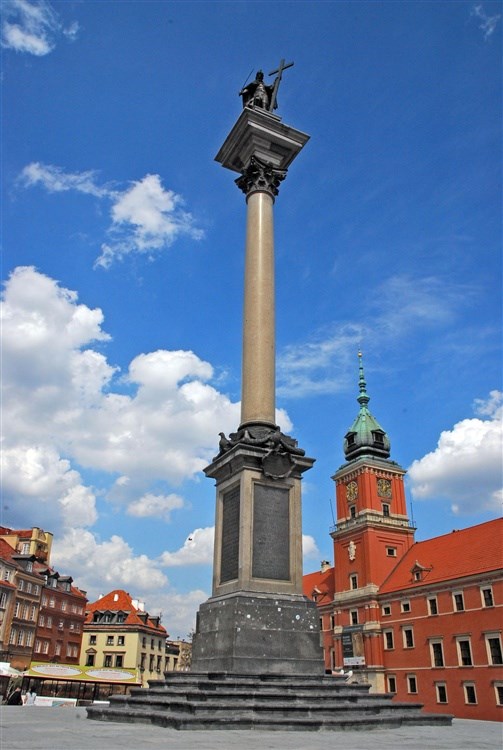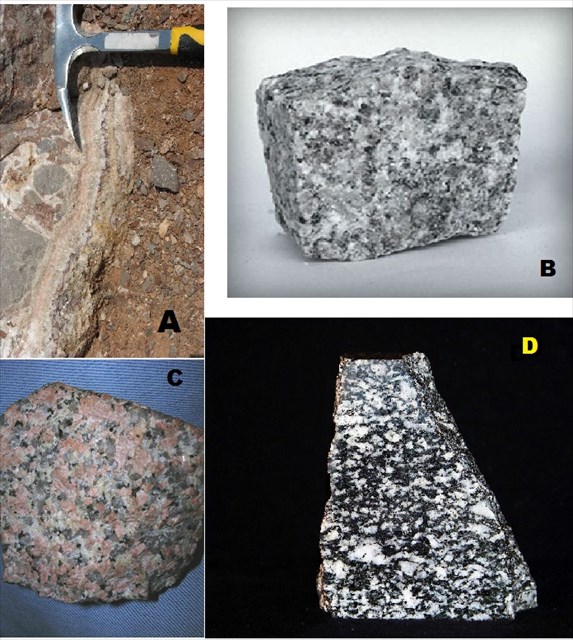
Click to go to the language version:
Polski  Français
Français  English
English 

Polski 
Kolumna króla Zygmunta III Wazy to jeden z symboli Warszawy. Jest najstarszym pomnikiem publicznym miasta, ufundowanym i ustawionym w latach 1643-1644.
Trochę historii
Pierwotnie to wcale nie miał być pomnik króla Zygmunta, tylko apoteoza jego zwycięstwa nad rokoszanami w lipcu 1607 r. w bitwie pod Guzowem. Zygmunt postanowił wystawić w Warszawie kolumnę mającą 72 stopy wysokości., jednak z pomysłu zrezygnował, ponieważ wykuwana w Chęcinach kolumna pękła w połowie z powodu rozwarstwienia.
Po śmierci Zygmunta jego syn postanowił postawić ku pamięci ojca kolumnę przed bramą krakowską. Sięgnięto więc po leżący w chęcińskich kamieniołomach odkuty już fragment, po czym przewieziono go do Warszawy. Kolumna została postawiona 24 listopada 1644 r. Autorami pomnika byli dwaj Włosi: rzeźbiarz Clemente Molli, twórca posągu króla, i architekt Constantino Tencalla, projektant całosci. Odlew posągu z brazu wykonał Daniel Thymm z Gdanska.
Kolumna wielokrotnie znajdowała się w ogniu walk – podczas woje szwedzkich, czy insurekcji kościuszkowskiej. Szwedzki król Karol Gustaw po zajęciu miasta zamierzał kolumnę przesunąć ją w mniej eksponowane miejsce, okazało się to jednak zbyt trudne technicznie. Z kolei rosyjski car Piotr I w 1711 roku „słup marmurowy wielki pod bramą w Warszawie statuę Zygmunta III dźwigający" zamierzał zabrać ze sobą, mając nawet zgodę polskiego króla Augusta II Sasa, ale „nie było sposobu na wiezienie tak wielkiej machiny". Za to car zabrał wówczas z ogrodów kazimierzowskich szereg posągów.
Otoczenie kolumny było też parokrotnie przebudowywane - postawiono niskie sztachety,potem dwanaście słupków z piaskowca (1827), zaś w 1855 postawiono przed nią fontannę. Mijały lata i pomnik wyglądał coraz gorzej. W 1885 roku, powołana przez prezydenta miasta S. Starynkiewicza komisja zaleciła natychmiastową przebudowę pomnika. Zawarto umowę z firmą austriacką, ale sam trzon z różowego granitu wykuto we Włoszech. 6 września 1887 r. posąg króla Zygmunta zajął znowu miejsce na jej szczycie.
W nowej postaci Kolumna Zygmunta przetrwała okres okupacji. Niemcy wysadzili ją w nocy z 1 na 2 września 1944. Jej trzon pękł na cztery kawałki, natomiast statua króla ucierpiała niewiele dzięki piaskowemu rdzeniowi pozostawionemu w jej wnętrzu. Rdzeń ten zamortyzował upadek. Trzon kolumny leży w zamkowym lapidarium, widać na nim liczne ślady po kulach.
Po wojnie zdecydowano o odbudowie kolumny. Nowy trzon kolumny wykonano z szarego granitu ze Strzegomia (tylko tam znaleziono monolit o odpowiednich wymiarach), i dodano schody ze sjenitu z Przedborowej. 11 lipca 1949 posąg króla zajął należne mu miejsce na szczycie kolumny. Uroczystego odsłonięcia pomnika dokonano 22 lipca 1949 roku.
Trochę geologii
W pobliżu koordynat znajdują się wszystkie 3 trzony kolumny Zygmunta – dwa z nich leżą w zamkowym lapidarium, na trzecim stoi obecnie pomnik Zygmunta III.
- Najstarszy trzon - wg informacji na tabliczce, wykonany z marmuru chęcińskiego. Jednakże tak naprawdę materiałem tym jest czerwony zlepieniec, zwany zygmuntowskim (a przez kamieniarzy "salcesonem" ze względu na swoją strukturę), wydobyty w kamieniołomie Zygmuntówka koło Chęcin (woj. świętokrzyskie). Zlepieniec to skała osadowa okruchowa, powstała w wyniku lityfikacji (cementacji) żwiru. Zlepieniec zygmuntowski składa się z szarych otoczaków wapieni i dolomitów dewońskich, spojonych czerwonym cementem węglanowym. Skała ta została utworzona w permie w czasie wkroczenia morza na teren ówczesnych Gór Świętokrzyskich. O wysokich walorach dekoracyjnych zlepieńca zygmuntowskiego decyduje zróżnicowana wielkość i barwa otoczaków, czerwone zabarwienie spoiwa oraz silna lityfikacja, pozwalająca na łatwe polerowanie. Wadą skały jest mała odporność na wietrzenie, dlatego ten trzon Kolumny Zygmunta szybko uległ zniszczeniu.

- Drugi trzon – wykonany z granitu, materiału dużo odporniejszego na działania czynników atmosferycznych, niż skały węglanowe, do których należy także zlepieniec zygmuntowski. Granit to skała magmowa plutoniczna, powstała w wyniku krzepnięcia magmy głęboko pod powierzchnią terenu. Składa się głównie z kwarcu (nadaje szklisty połysk), skaleni potasowych (wybarwienie), plagioklazów (szarych) i łyszczyków (czarny biotyt i muskowit). Może przybierać barwy: białą, kremową, jasnoszarą, różową, zieloną lub czerwoną. Ten trzon wykonany jest różowego granitu z włoskiej kopalni Baveno.

- Trzeci trzon, aktualnie stojący na Placu Zamkowym – wykonany również z granitu, tym razem pochodzącego ze Strzegomia na Dolnym Śląsku. Granit strzegomski oznacza się barwą jasnoszarą. Składa się z szarego kwarcu, białych skaleni i czarnego biotytu. Jest to skała bardzo odporna na wietrzenie.
Do współczesnej kolumny dodano również schody, wykonane z materiału nazywanego potocznie sjenitem przedborowskim, który w rzeczywistości jest ciemnoszarym monzodiorytem kwarcowym, pochodzącym z brzeżnej strefy gnejsów sowiogórskich, na bloku przedsudeckim. Głównymi składnikami tej magmowej skały plutonicznej są równomiernie rozmieszczone białawe skalenie, ciemnozielona hornblenda, ciemnobrunatny biotyt i w ilościach śladowych szarawy kwarc. Struktura skały jest drobnoziarnista, a rozmieszczenie składników nie wykazuje kierunkowości. Na pierwszy rzut oka może ona przypominać granit, jednak zawiera więcej minerałów ciemnych, zaś dużo mniej kwarcu.

Trochę zadań...
Odpowiedzi proszę wysyłać za pomocą mojego profilu. Nie trzeba czekać na moją odpowiedź, można od razu logować. Jeśli coś będzie nie tak, zgłoszę się sam. Logi bez podesłanych odpowiedzi będą kasowane.
- Rozpoznaj skały przedstawone na poniższych zdjęciach (wszystkie były wykorzystane przy konstrukcji kolumn i opisane powyżej):

- Co powoduje charakterystyczne zabarwienie skał użytych na dwa najstarsze trzony kolumn?
- Przyjrzyj się kolumnie z granitu Baveno. Widać na niej liczne ślady po pociskach, a także pęknięcia. Podaj długość najdłuższego pęknięcia na tej kolumnie.
- OPCJONALNIE: foto mile widziane
Bibliografia:
Michel F., Roches et paysages, reflets de l’histoire de la Terre, Paris, Belin, Orléans, BRGM éditions, 2005
Beaux J.-F., Platevoet B., Fogelgesang J.-F., Atlas de Pétrologie, DUNOD, Paris 2012
Pomerol Ch., Lagabrielle Y., Renard M., Guillot S., Eléments de géologie, DUNOD, Paris 2011
Robert Ch., Bousquet R., Geosciences - La dynamique du système Terre, BELIN LITTERATURE ET REVUES (2013)
Chęć E., Kolumna Zygmunta. Szlakiem warszawskich zabytków, Warszawa 2012
Wikipedia
Zdjecia
Wikipedia, fotopolska.eu, własne
Français 
Un peu d'histoire
Colonne de Sigismond érigé en 1644, est situé dans la Place du Château et est l'un des monuments les plus célèbres de Varsovie et l'un des plus anciens monuments séculaires en Europe du Nord. La colonne et la statue commémorant le roi Sigismond III Vasa (roi de Pologne et Suède), qui en 1596 avait déménagé la capitale de la Pologne de Cracovie à Varsovie.
À l'origine, il ne devait pas être la statue du roi Sigismond, mais seulement apothéose de sa victoire sur les rebelles en Juillet 1607 à la bataille de Guzów. Le roi Sigismond voulait mettre à Varsovie une colonne corinthienne haute de 72 pieds, mais a finalement renoncé parce que la colonne a éclaté au cours en raison de la stratification dans la carrière en Checiny.
Érigé entre 1643 et 1644, la colonne a été construit sur les ordres de son fils et successeur de Sigismond, roi Władysław IV Vasa. Il a été conçu par l'architecte d'origine italienne Constatntino Tencalla et le sculpteur Clemente Molli, et le jeta par Daniel Thymm de Gdansk. Colonne de Sigismond a été modelée sur les colonnes italiennes en face de la basilique de Santa Maria Maggiore, et la colonne de Phocas à Rome (Władysław IV Vasa avait vu tous les deux au cours de sa visite à Rome en 1625).
En 1681, le monument a été entouré d'une clôture en bois, qui a été plus tard remplacée par une permanente clôture de fer. La première colonne elle-même a été rénové à plusieurs reprises au cours des prochains siècles, notamment en 1743, 1810, 1821 et 1828 En 1854, le monument a été entouré d'une fontaine avec des tritons de marbre. En 1863, la colonne a été rénové peu de nouveau, mais encore besoin de travail, et entre 1885 et 1887, il a été remplacé par une nouvelle colonne de granit. Entre 1927 et 1930, le monument a été à nouveau rénové et a retrouvé son aspect d'origine lorsque la fontaine et la clôture autour de lui ont été retirés.
La colonne a été au cœur des champs de bataille le nombre de fois - pendant les guerres suédoises, et l'insurrection de Kosciuszko. Le roi de Suède, Carl Gustaf, après la capture de la ville, destiné à déplacer la colonne dans un endroit moins visible, mais il s'est avéré être techniquement trop difficile. Plus tard, en 1711, le tsar de Russie Pierre 1er voulait prendre avec lui dans la nouvelle capitale de la Russie - Saint-Pétersbourg, mais les problèmes techniques avec le transport ont l’empêché. Au lieu de cela, il a fallu plusieurs statues des jardins de Kazimierz.
La colonne a survécu à l'occupation pendant la Seconde Guerre mondiale. Le 1er Septembre 1944, lors de l'Insurrection de Varsovie, le monument a été démoli par les Allemands - le fût cassé en quatre morceaux et la statue de bronze a survécu grâce à la cœur de sable à l'intérieur. Ce noyau a amorti la chute.
Après la Seconde Guerre mondiale la statue a été réparé, et en 1949 il a été mis en place sur une nouvelle colonne, à quelques mètres du site d'origine.
Les morceaux brisés d'origine des deux colonnes précédentes peuvent encore être vus gisant dans le lapidaire du Château Royal.
Un peu de géologie
Près des coordonnées il ya les 3 fûts de la colonne de Sigismond - deux se trouvent dans le lapidaire du château, le troisième est aujourd'hui un monument de Sigismond III.
- Le fût le plus ancien - selon les informations sur la plaque, en "marbre de Chęciny". Toutefois, ce matériau est le conglomérat rouge, appelé « conglomérat de Sigismond »" (et par les maçons ça s'appelle "salceson" (saucisson), en raison de sa structure). Il a été exploité dans la carrière Zygmuntówka près Chęciny (province de Sainte-Croix). Conglomérat est une roche sédimentaire détritique (issue de la dégradation mécanique d'autres roches) composée de morceaux discernables liés entre eux par un ciment naturel. Pour être considérés comme discernables, les morceaux doivent mesurer plus de 2 mm (en dessous de cette taille, on aurait affaire à un grés et non plus à un conglomérat).
Le conglomérat de Sigismond se compose de calcaire gris et de dolomie galets de carbonate Dévonien, collés avec du rouge carbonate ciment. Cette roche a été formée au cours de la mer du Permien entrer dans les montagnes de Sainte-Croix contemporains. Sa haute valeur décorative doit à la taille et la couleur des galets, de la couleur rouge du ciment et forte lithification, permettant polissage facile. L'inconvénient de cette roche est faible résistance au météorisation, et c'est la raison pour laquelle le premier fût de la colonne de Sigismond a été détruit rapidement.

2. Le deuxième fût - de granit, matériau beaucoup plus résistant au météorisation, que les roches carbonatées. Le granite est une roche plutonique magmatique, à texture grenue. Le granite est le résultat du refroidissement lent, en profondeur, de grandes masses de magma intrisif qui formeront le plus souvent des plutons, ces derniers affleurant actuellement, en surface grâce au jeu de l’érosion qui a décapé les roches sus-jacentes. Ces magmas acides (c'est-à-dire relativement riches en silice) sont essentiellement le résultat de la fusion partiell de la croûte terrestre continentale. Certains granites (plagiogranites) rencontrés en petits plutons dans la croûte océanique sont, quant à eux, le résultat de la différenciation ultime de magmas basiques. Ses minéraux constitutifs sont principalement du quartz (provoque éclat vitreux), des micas (biotite noir et muscovite), des feldspaths potassiques (coloration), et des plagioclases (gris). En tout, on dénombre aujourd'hui plus de 500 couleurs de granites différentes. Cet fût est fait de granit rose de la carrière italienne à Baveno.

3. Le troisième fût , qui s'élève actuellement à Place du Château - également en granit, mais cette fois en provenance de la carrière de Strzegom (Basse-Silésie). Granit de Strzegom est de couleur gris clair. Il se compose principalement de quartz gris, de feldspath blanc et de biotite noir. Cette roche est très résistant à l'érosion.
Pour la colonne contemporain l'escalier a été ajouté. Cet escalier est fait d'un matériau connu familièrement comme «syénite de Przedborowa», mais en fait c'est un monzodiorite de quartz gris foncé, issue de la zone marginale de gneiss à les Monts des Hiboux (dans les Sudètes centrales, dans le Sud Ouest de la Pologne). Le monzodiorite est une roche ignée plutonique grenue, composée de feldspath plagioclase (de couleur blanchâtre), le feldspath orthose, hornblende (verte), et de mica (la brun foncée biotite), avec ou sans pyroxène. Plagioclase est le feldspath dominant fait jusqu'à 60-90% de feldspath totale et variant de oligoclase à andésine dans la composition. La présence du feldspath orthose distingue cette pierre d'une diorite. À première vue, il peut ressembler à du granit, mais contient plus de minéraux foncés, et beaucoup moins vitreux éclat de quartz.

Quelques missions ...
S'il vous plaît envoyer vos réponses via mon profil de GC. Il n'y a pas besoin d'attendre ma réponse, vous pouvez vous loguer immédiatement. Si la réponse est incorrecte, je vous contacterai. S'il vous plaît rappelez-vous que les logs sans réponses seront supprimés!
Pour loguer un "found it" sur cette cache il sera nécessaire de me répondre aux questions suivantes:
- Identifiez les roches représentées dans les images au-dessous (tous ont été utilisés dans la construction des colonnes et sont décrits ci-dessus):

2. Quelles sont les causes de la coloration caractéristique des roches utilisées dans les deux plus anciens fûts de colonnes?
3. Regardez le fût de colonne de granit de Baveno. Il ya beaucoup de traces de boulets, ainsi que quelques fissures. Spécifiez la longueur de la plus longue fissure sur cet fût.
4. OPTION: N'hésitez pas à ajouter des photos!
BON GÉOCACHING !
Références:
Michel F., Roches et paysages, reflets de l’histoire de la Terre, Paris, Belin, Orléans, BRGM éditions, 2005
Beaux J.-F., Platevoet B., Fogelgesang J.-F., Atlas de Pétrologie, DUNOD, Paris 2012
Pomerol Ch., Lagabrielle Y., Renard M., Guillot S., Eléments de géologie, DUNOD, Paris 2011
Robert Ch., Bousquet R., Geosciences - La dynamique du système Terre, BELIN LITTERATURE ET REVUES (2013)
Chęć E., Kolumna Zygmunta. Szlakiem warszawskich zabytków, Warszawa 2012
Wikipedia
Photographies:
Wikipedia, fotopolska.eu, ,mes propres
English

A bit of history
Sigismund's Column erected in 1644, is located in the Castle Square and is one of Warsaw’s most famous landmarks and one of the oldest secular monuments in northern Europe. The column and statue commemorate King Sigismund III Vasa (king of Poland and Sweden), who in 1596 had moved Poland’s capital from Cracow to Warsaw.
Originally, it was not supposed to be the statue of King Sigismund, but only apotheosis of his victory over rebels in July 1607 at the battle of Guzow. King Sigismund wanted to put in Warsaw a 72-feet high Corinthian column, but finally gave up because the column broke during due to stratification in the quarry in Checiny.
Erected between 1643 and 1644, the column was constructed on the orders of Sigismund's son and successor, King Władysław IV Vasa. It was designed by the Italian-born architect Constatntino Tencalla and the sculptor Clemente Molli, and cast by Daniel Thymm from Gdansk. The Sigismund’s Column was modelled on the Italian columns in front of Basilica di Santa Maria Maggiore, and the Column of Phocas in Rome (Władysław IV Vasa had seen both of them during his visit to Rome in 1625).
In 1681 the monument was surrounded with a wooden fence, which was later replaced with a permanent iron fence.
The first column itself was renovated several times in the next few centuries, most notably in 1743, 1810, 1821 and 1828. In 1854 the monument was surrounded with a fountain featuring marble tritons. In 1863 the column was renovated somewhat again, but still needed work, and between 1885 and 1887 it was replaced with a new column of granite. Between 1927 and 1930, the monument was again renovated, and was restored to its original appearance when the fountain and the fence around it were removed.
The Column has been in the heat of battle many times - during the Swedish wars, the Kosciuszko Insurrection. The Swedish King, Carl Gustaf, after capturing the city, intended to move the Column in a less prominent place, but it turned out to be technically too difficult. Later on, in 1711 the Russian Tsar Peter I wanted to take it with him to the new established capital of Russia - Saint Petersburg, but the technical problems with transportation had prevented that again. Instead, he took several statues from the gardens of Kazimierz.
The Column survived the occupation during WWII. On 1 September 1944, during the Warsaw Uprising, the monument was demolished by the Germans – the shaft broke into four pieces and the bronze statue survived thanks to the sand core inside it. This core had cushioned the collapse.
After the WWII the statue was repaired, and in 1949 it was set up on a new column, a couple of metres from the original site.
The original broken pieces of the two previous columns can still be seen lying in the Royal Castle lapidary.
A little bit of geology
Near the coordinates there are all 3 shafts of the Sigismund's Column - two of them lie in the castle lapidary, the third is now a monument of Sigismund III.
1. The oldest shaft - according to the information on the plate, made of “Chęciny marble”. However, this material is the red conglomerate, called “conglomerate of Sigismund” (and by the masons it’s called “salceson” (brawn), because of its structure). It was mined in the quarry Zygmuntówka near Chęciny (Holy Cross province). Conglomerate is a sedimentary rock consisting of individual clasts within a finer-grained matrix that have become cemented together, formed as a result lithification (cementation) of gravel.
The conglomerate of Sigismund consists of gray limestone and dolomite pebbles of Devonian carbonate, bonded with red carbonate cement. This rock was formed during the Permian sea entering into the contemporary Holy Cross Mountains. Its high decorative value owes to the size and color of pebbles, red color of the cement and strong lithification, enabling easy polishing. The disadvantage of this rock is low resistance to weathering, and that’s the reason why was the first shaft of the Sigismund’s Column so quickly destroyed.

2. The Second shaft - made of granite, material much more resistant for weathering, than the carbonate rocks. Granite is a plutonic igneous rock, formed by the solidification of magma deep below the surface. It consists mainly of quartz (causes glassy shine), potassium feldspar (coloration), plagioclase (gray) and mica (black biotite and muscovite). Granites can be predominantly white, pink, or gray in color, depending on their mineralogy. This shaft is made of pink granite from the Italian quarry in Baveno.

-
The third shaft, currently standing at Castle Square - also made of granite, but this time coming from the quarry in Strzegom (Lower Silesia). Strzegom granite is light gray in color. It consists mainly of gray quartz, white feldspar and black biotite. This rock is very resistant to the weathering.
To the contemporary column the staircase has been added. This staircase are made of a material known colloquially as “Przedborowa syenite”, but actually it is a dark gray quartz monzodiorite, derived from marginal zone of gneisses in Owl Mountains (Central Sudetes in S-W of Poland).
The monzodiorite is a coarse-grained igneous plutonic rock, consisting of essential plagioclase feldspar (whitish in color), orthoclase feldspar, hornblende (dark green), and biotite (dark brown), with or without pyroxene. Plagioclase is the dominant feldspar making up 60–90% of the total feldspar and varying from oligoclase to andesine in composition. The presence of the orthoclase feldspar distinguishes this rock from a diorite. At first glance it may resemble granite, but contains more dark minerals, and much less glassy shine quartz.

And now a few tasks…
To log this EarthCache please answer the following questions:
1. Identify the rocks shown in the pictures below (all were used in the construction of the columns and are described above):

2. What causes the characteristic coloration the rocks used in the two oldest column shafts?
3. Look at the Baveno granite column shaft. There are many traces of the bullets, as well as some cracks. Specify the length of the longest crack on this shaft.
4. OPTIONAL: Feel free to add pictures!
Please send your answers using my GC profile. There's no need to wait for my reply, you can log immediately. If the answer is incorrect, I will contact you. Please remember that the logs without answers will be deleted!
BON GEOCACHING!
References:
Michel F., Roches et paysages, reflets de l’histoire de la Terre, Paris, Belin, Orléans, BRGM éditions, 2005
Beaux J.-F., Platevoet B., Fogelgesang J.-F., Atlas de Pétrologie, DUNOD, Paris 2012
Pomerol Ch., Lagabrielle Y., Renard M., Guillot S., Eléments de géologie, DUNOD, Paris 2011
Robert Ch., Bousquet R., Geosciences - La dynamique du système Terre, BELIN LITTERATURE ET REVUES (2013)
Chęć E., Kolumna Zygmunta. Szlakiem warszawskich zabytków, Warszawa 2012
Wikipedia
Photographs:
Wikipedia, fotopolska.eu, own
